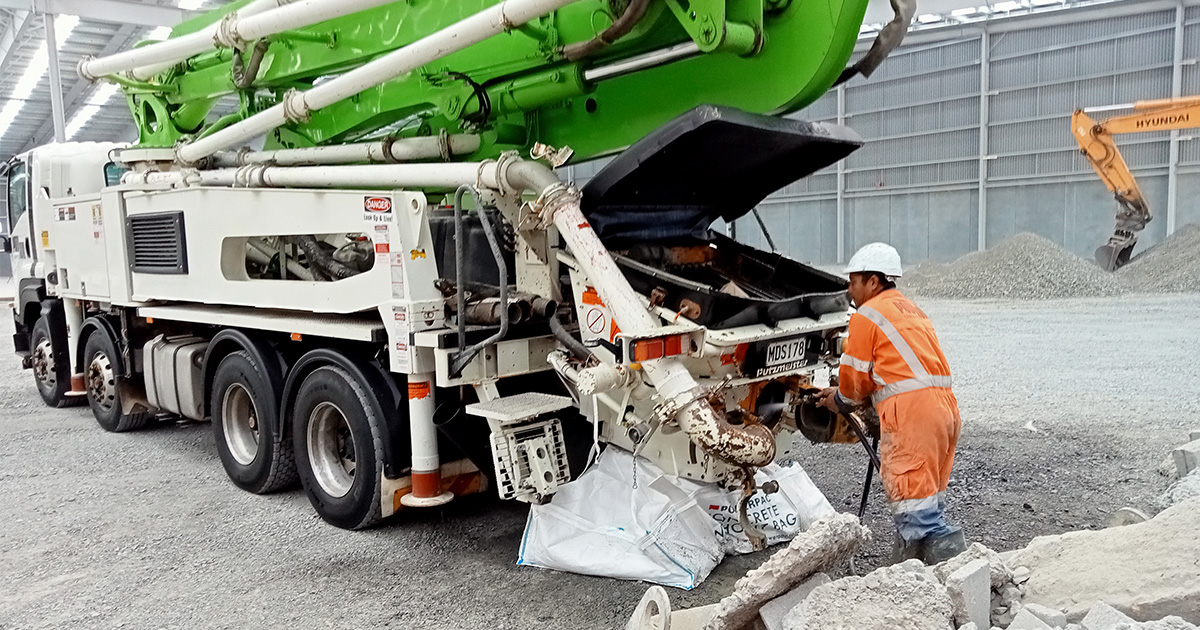Preventing pump pollution
24 May 2024, Community & Sponsorship, News

Pumping concrete takes a versatile material to new places and has changed the way we undertake construction. However, this method of laying concrete carries additional environmental risk, as concrete that escapes from pumping activity can be very destructive. Auckland Council Senior Waste Planning Specialist, Mark Roberts, provides some common sense solutions for ensuring concrete is managed correctly
Councils across the country are placing more emphasis on the effects of concrete use on water quality. It is important that you consider the effects your concrete pumping activities may have on the environment before you begin.
Contractors can face abatement notices or fines from councils if wet concrete or slurry is found outside of construction sites. Your clients, as the property owners, can also be fined for failing to control any sediment or concrete that escapes into gutters, rain gardens or storm water drains.
Some common-sense actions will reduce the risk of releasing concrete into waterways.
Before starting a pumping job, identify where any run-off will flow, such as kerb channels, stormwater drains and natural water bodies.
Ensure there are adequate facilities onsite for washing out and that wash-out will not run off the site.
Check for any specific environmental or waste management plans with the site or project manager.
It is the responsibility of the pumping contractor to ensure residue or clearing of pipes does not escape from the site.
Pumping into gutters, berms or neighbouring properties is unacceptable and can result in fines.
Ensure that all staff have appropriate training that addresses all aspects of environmental responsibility required of a professional concrete pumping contractor, including spill response procedures, pollution controls and proper clean-up procedures.
Pump-out bags, like the one pictured, are effective in reducing environmental risks and waste from concrete pumping.
Simple planning before a project begins can reduce the risk that concrete pumping presents to the environment and prevent fines and abatement notices.
Excess concrete should be disposed of into a site receptacle designated for concrete, such as a pump out bag, and allowed to set before being sent to a concrete recycler. Dumping of pump out waste onto neighbouring sections, berms, reserves, rain gardens or gutters (yes, this does happen) is strictly forbidden.
Concrete wash or slurry that finds its way into drains will eventually make its way into streams and creeks. The high alkalinity is extremely damaging to fish and other freshwater life. No amount of water can ever be poured into a drain or waterway to sufficiently dilute even a small amount of concrete.
Register to earn LBP Points Sign in



